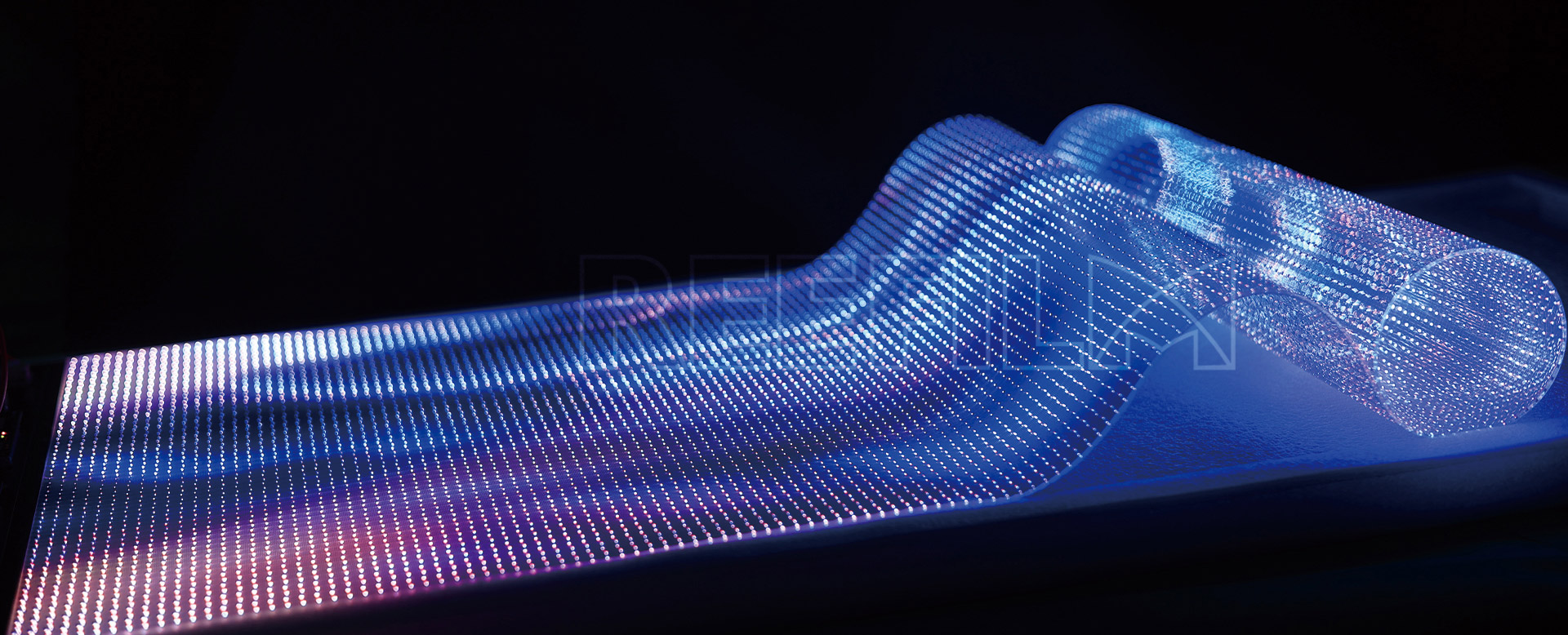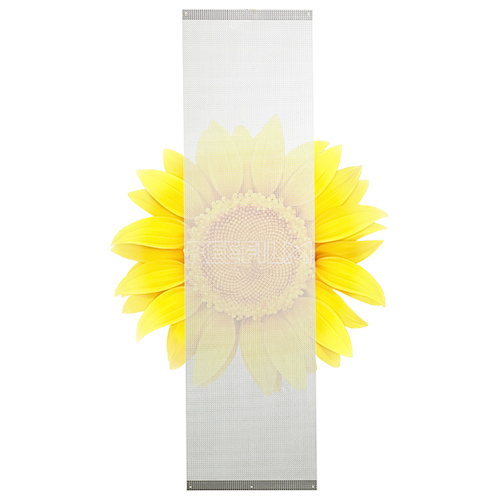

Holographic LED Screen Display is an advanced visual technology that combines holography and LED (Light Emitting Diode) technology to create three-dimensional, lifelike images that appear to float in space without the need for special glasses or additional visual aids. This cutting-edge display system has revolutionized the way we perceive and interact with digital content, offering a truly immersive and captivating experience.
Features:
Lifelike 3D Visuals: Holographic LED display can project realistic three-dimensional images with exceptional depth and detail. This enables users to experience content in a way that was previously only possible in sci-fi movies.
No Glasses or Accessories Required: Unlike traditional 3D displays, holographic LED screens do not require viewers to wear specialized glasses or headsets, making the experience more convenient and comfortable for the audience.
Interactive Capabilities: Some holographic LED screens offer interactive features, allowing users to interact with the projected images through touch or gestures. This opens up new possibilities for interactive presentations, gaming, and educational applications.
Wide Viewing Angle: The holographic LED technology ensures that the 3D images can be viewed from a wide range of angles without loss of quality. This feature is particularly useful in public settings, where multiple people can enjoy the content simultaneously.
High Brightness and Contrast: LED technology provides high brightness levels and contrast ratios, ensuring that holographic images are vivid, sharp, and easily visible even in brightly lit environments.
Energy-Efficient: Holographic LED displays are relatively energy-efficient compared to other large-scale display technologies, making them more eco-friendly and cost-effective in the long run.
Versatility in Applications: Holographic LED screens find applications in various industries, including entertainment, advertising, retail, education, and medical fields. They can be used for product demonstrations, immersive storytelling, virtual try-ons, medical imaging, and much more.
Scalable Display Sizes: Holographic LED screens come in a range of sizes, from small portable units to large-scale installations, making them suitable for different settings and requirements.
Futuristic Appeal: The use of holographic LED displays adds a futuristic and innovative touch to any space, captivating and engaging audiences with its awe-inspiring visual effects.
| Model | RS-P3.91 | RL-P3.91 |
| Pixel spacing | L(3.91mm)W(3.91mm) | L(3.91mm)W(3.91mm) |
| Pixel density | 65536 points /㎡ | 65536 points /㎡ |
| Module size | 1000mm*250mm | 1500mm*250mm |
| LED light | 1515(light drive in one) | 1515(light drive in one) |
| Breakpoint continuation | √ | √ |
| Thickness | 1-3mm | 1-3mm |
| Power Consumption | Avg:200W/㎡,Max:600W/㎡ | Avg:200W/㎡,Max:600W/㎡ |
| Weight | Less than3kg/㎡ | Less than3kg/㎡ |
| Permeability | >80% | >80% |
| Life span | >100,000 | >100,000 |
| Power supply requirement | 220V±10%;AC50HZ,Three-phase five-wire | 220V±10%;AC50HZ,Three-phase five-wire |
| Brightness | White balance brightness 2000-4500cd/㎡; automatic and manual adjustment according to ambient brightness | White balance brightness 2000-4500cd/㎡; automatic and manual adjustment according to ambient brightness |
| Angle of view | H160,V140 | H160,V140 |
| Grayscale level | ≥16(bit) | ≥16(bit) |
| Color Temperature | 5500K-15000K(Adjustable) | 5500K-15000K(Adjustable) |
| Drive mode | static state | static state |
| Attenuation rate | Less than 0.05% in 2 years | Less than 0.05% in 2 years |
| Refresh rate | >3840HZ | >3840HZ |
| MTBF | > 10000H | > 10000H |
| LED bead failure rate | less than one ten thousandth and is discretely distributed | less than one ten thousandth and is discretely distributed |
| Control system | Colorlight/Nova Synchronous/Asynchronous | Colorlight/Nova Synchronous/Asynchronous |
| Use environment | ◆Working environment:-10~+65℃/10~90%RH ◆Storage environment:-40~+85℃/10~90%RH | ◆Working environment:-10~+65℃/10~90%RH ◆Storage environment:-40~+85℃/10~90%RH |
| Installation mode | Mounting, lifting, fixing, support any size cutting, bending | Mounting, lifting, fixing, support any size cutting, bending |
holographic LED screen display is an advanced technology that combines the principles of holography and LED (Light Emitting Diode) technology. It creates three-dimensional visual projections that appear to float in space without the need for special glasses or equipment. These displays use an array of LEDs to project light onto a specialized transparent or semi-transparent screen, which acts as a medium to display the holographic content. The result is a stunning and immersive visual experience that captivates viewers and brings digital content to life in a whole new way.
Transparent Hologram LED Screen work on the principle of interference patterns. The array of LEDs emits coherent light that is directed towards the holographic screen. The screen contains a pattern of tiny microstructures that diffract light in specific ways, creating interference patterns that generate the holographic effect. As the light interacts with these microstructures, it reconstructs the 3D image, which appears to float in space, visible from multiple angles. The precise alignment of the LEDs and the microstructures on the screen is crucial to achieve a high-quality and realistic holographic display.
holographic LED screen display have a wide range of applications across various industries. They are used for advertising and marketing to create eye-catching and memorable displays that draw customers' attention. In entertainment, holographic LED screens add a new dimension to concerts, stage shows, and theme park attractions, enhancing the overall experience for the audience. Moreover, in fields like education and scientific visualization, these displays enable interactive and engaging presentations of complex concepts and data. Additionally, holographic LED screen display have found applications in product design, virtual prototyping, and medical imaging, further expanding their utility and potential.
holographic LED screen display offer unique advantages over traditional displays in terms of visual appeal and interactivity. They provide a more immersive and realistic viewing experience, making them ideal for applications where captivating visual content is essential. However, traditional displays still have their strengths, such as higher resolution and color accuracy, which are crucial in certain professional and technical fields. The choice between holographic LED screen display and traditional displays depends on the specific requirements of the application and the desired impact on the audience.
Yes, many holographic LED screen display are designed to be interactive. With the integration of touch-sensitive technology or gesture recognition systems, users can interact with the holographic content. This interactive feature opens up new possibilities for user engagement, enabling people to manipulate and control the holographic elements with their gestures or touch. Interactive holographic LED screen display are widely used in exhibitions, museums, and interactive installations, where they create a memorable and engaging experience for visitors, encouraging active participation and exploration of the displayed content.
PDF download